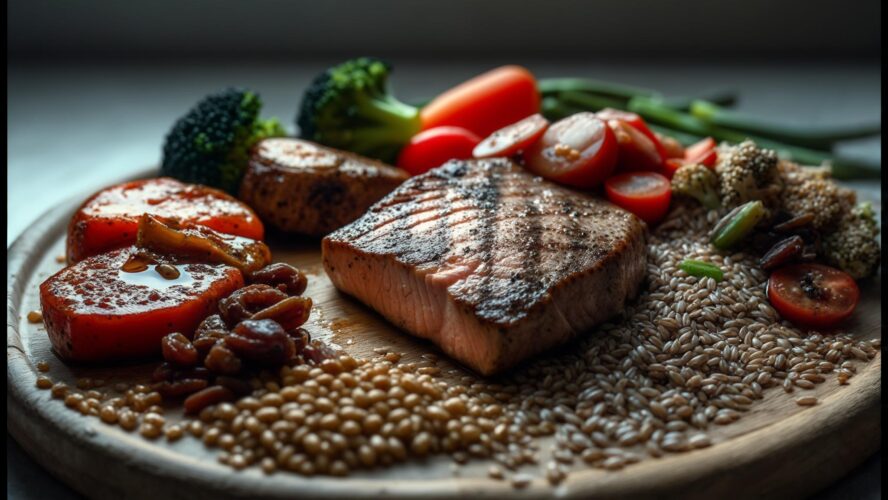
I used to be that person weighing chicken breasts at 6 AM, stressing about hitting exactly 147 grams of protein by bedtime. Sound familiar? After three years of this madness, I finally realized I was missing the forest for the trees. Turns out, when you eat matters just as much as what you eat – and nobody talks about this stuff.
Most people think macro meal planning is just about hitting daily protein, carb, and fat targets, but there’s this whole other layer that determines whether your plan actually works. I spent years obsessing over my daily numbers while completely missing how my body actually processes nutrients throughout the day.
The reality is that as a general rule-of-thumb, your macro meal plan should have at least 0.8 – 1g of protein per pound of bodyweight according to Strongr Fastr, yet most people struggle to maintain even basic consistency. I was one of them – hitting my targets but feeling like garbage and wondering why my results sucked.
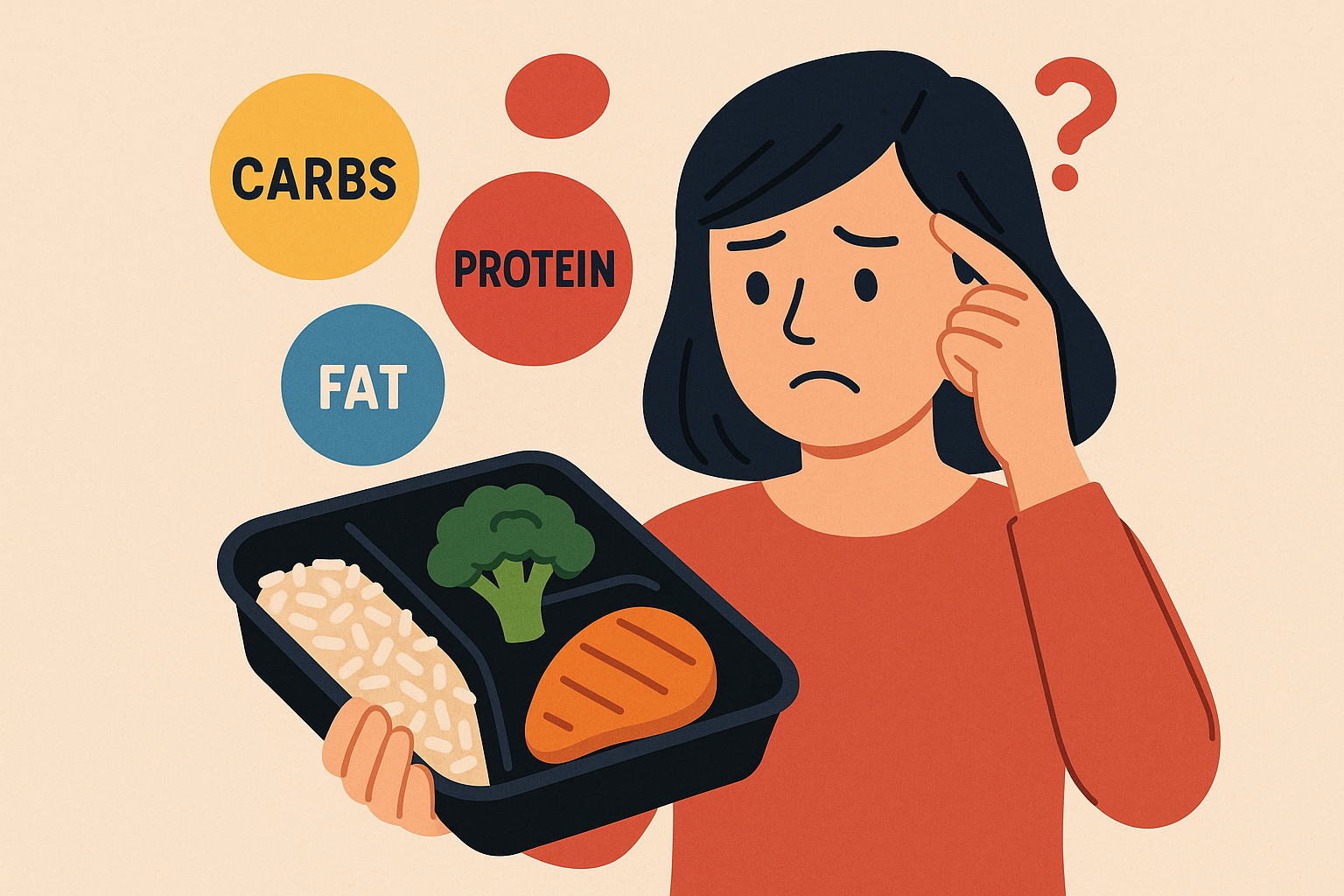
Table of Contents
- The Real Truth About When Your Body Actually Uses Macros
- Why Your Vitamins and Minerals Make or Break Your Macro Success
- The Mental Game Nobody Talks About in Macro Planning
- Teaching Your Body to Burn Different Fuels (Not Just One)
TL;DR – The Game-Changing Insights You Need to Know
- Your body processes protein differently at 7 AM versus 7 PM – timing beats total amounts
- Missing key vitamins can sabotage perfect macro ratios (learned this the hard way)
- Tracking every macro will fry your brain and ruin your willpower for everything else
- Teaching your body to switch between fuel sources beats obsessing over exact numbers
- Your friends’ eating habits influence your success more than your willpower does
Understanding these fundamentals connects directly to intermittent fasting strategies for women, which can help you work with your body’s natural rhythms instead of fighting them.
The Real Truth About When Your Body Actually Uses Macros
Here’s what I wish someone had told me three years ago: your body doesn’t process nutrients the same way at different times of day. There are specific windows when protein actually builds muscle, when carbs get burned for energy versus stored as fat, and when your hormones either help or hurt your progress.
Ever notice how you can eat the same breakfast and feel energized one day, crashed the next? Yeah, me too. Turns out, your body’s internal clock is running the show, and working with it instead of against it changes everything.
Your Protein Needs Change Every Few Hours (Here’s When to Eat What)
Most people spread protein evenly throughout the day because it seems logical, but your muscles are basically on their own schedule – kind of like that friend who’s always late to dinner. They want protein when THEY want it, not when it’s convenient for you.
Research shows that the reason this amount of protein matters is it’s critical for building and retaining muscle mass according to Strongr Fastr, but here’s what they don’t tell you – the timing of that protein can make or break whether your body actually uses it.
I’ll break down the three times of day that can make or break your results. Trust me, once you understand this, you’ll never look at your meal timing the same way.
Why Your Breakfast Protein Isn’t Working (And How to Fix It)
Between 6-9 AM, your muscles need a specific amino acid called leucine to actually start building. That Greek yogurt or protein smoothie you’re having? It might not be doing what you think it’s doing.
Your muscle-building machinery essentially stays “asleep” until it gets this wake-up call. Without hitting this threshold, you’re basically wasting the first protein opportunity of your day. I learned this after months of wondering why I felt weak during morning workouts despite eating “enough” protein.
For those following proper oatmeal preparation techniques, adding the right protein sources can turn your morning meal into something that actually helps build muscle.
| Breakfast Protein Source | Leucine Content (g) | Total Protein (g) | Muscle Building Potential |
|---|---|---|---|
| Greek Yogurt (1 cup) | 2.1 | 20 | Moderate |
| Whey Protein Shake | 2.8 | 25 | High |
| 3 Whole Eggs | 2.0 | 18 | Moderate |
| Cottage Cheese (1 cup) | 2.6 | 28 | High |
| Oatmeal with Milk | 1.2 | 12 | Low |
Here’s the deal with breakfast protein – that bowl of oatmeal with milk? It’s basically doing nothing for your muscles. Greek yogurt or a protein shake? Now we’re talking. I switched from my usual oatmeal to Greek yogurt with berries and my energy stayed steady until lunch instead of crashing at 10 AM like clockwork.
The Bedtime Protein Strategy That Works While You Sleep
This is going to sound crazy, but eating the right protein 2-3 hours before bed can boost overnight muscle building by 22%. Your muscles literally grow while you sleep, but only if you give them the right fuel at the right time.
Your body releases growth hormone about 2-3 hours after you fall asleep. If you time your slow-digesting protein right, you’re essentially feeding your muscles during their prime building window. I started having cottage cheese or casein protein before bed and noticed better recovery within a week.

The key is choosing proteins that digest slowly enough to provide amino acids throughout the night but won’t sit heavy in your stomach. Cottage cheese works great, or even a small portion of lean meat if you’re not into dairy.
The Post-Workout Protein Window Is Longer Than You Think
I used to panic if I didn’t get my post-workout shake within 30 minutes. Spoiler alert: your muscles aren’t going anywhere. That “anabolic window” actually stays open for 3-5 hours after training.
This longer timeframe completely changes how you can structure your day. Instead of rushing to chug a protein shake in the gym parking lot, you can plan your entire eating pattern around your workout schedule. This flexibility makes sticking to your plan so much easier when you’re not constantly watching the clock.
Want to Know the Weirdest Thing I Learned About Carbs?
Your body’s ability to handle carbs isn’t constant throughout the day – it follows predictable patterns that you can use to your advantage. There are times when your body is primed to use carbs for energy and times when those same carbs are more likely to get stored as fat.
Recent research from MD Anderson Cancer Center emphasizes that “carbohydrates – or carbs – are the body’s primary fuel. They provide energy for your muscles and the central nervous system during movement and exercise,” with recommendations that 45% to 65% of daily calories should come from carbohydrates.
But here’s what they don’t mention – the timing of those carbs matters just as much as the total amount. Understanding these natural ups and downs lets you eat carbs strategically instead of just counting them.
Why Morning Carbs Might Be Sabotaging Your Progress
Your stress hormone cortisol naturally spikes in the morning, which raises your blood sugar. This makes early morning the worst possible time for high-sugar carbs. Yet most breakfast foods – cereals, bagels, fruit juices – violate this principle completely.
When you eat high-sugar carbs during your natural cortisol peak, you’re basically creating a perfect storm for fat storage and energy crashes. I used to start every day with a 400-calorie bagel and wonder why I was starving by 10 AM and exhausted by lunch.
Instead of that bagel (78g carbs, high sugar), try steel-cut oats with berries (45g carbs, lower sugar) paired with Greek yogurt. This combination provides sustained energy without the rollercoaster ride that leads to mid-morning crashes and cravings.
The 48-Hour Carb Advantage After Weight Training
After you lift weights, your muscles can absorb carbs without needing much insulin for up to 48 hours. This creates a window where carb timing becomes way less critical than carb quality.
Your trained muscles essentially become glucose sponges, soaking up carbs and storing them as energy regardless of insulin levels. This post-workout advantage changes how you think about carb cycling – you have much more flexibility in the 48 hours following a good training session.
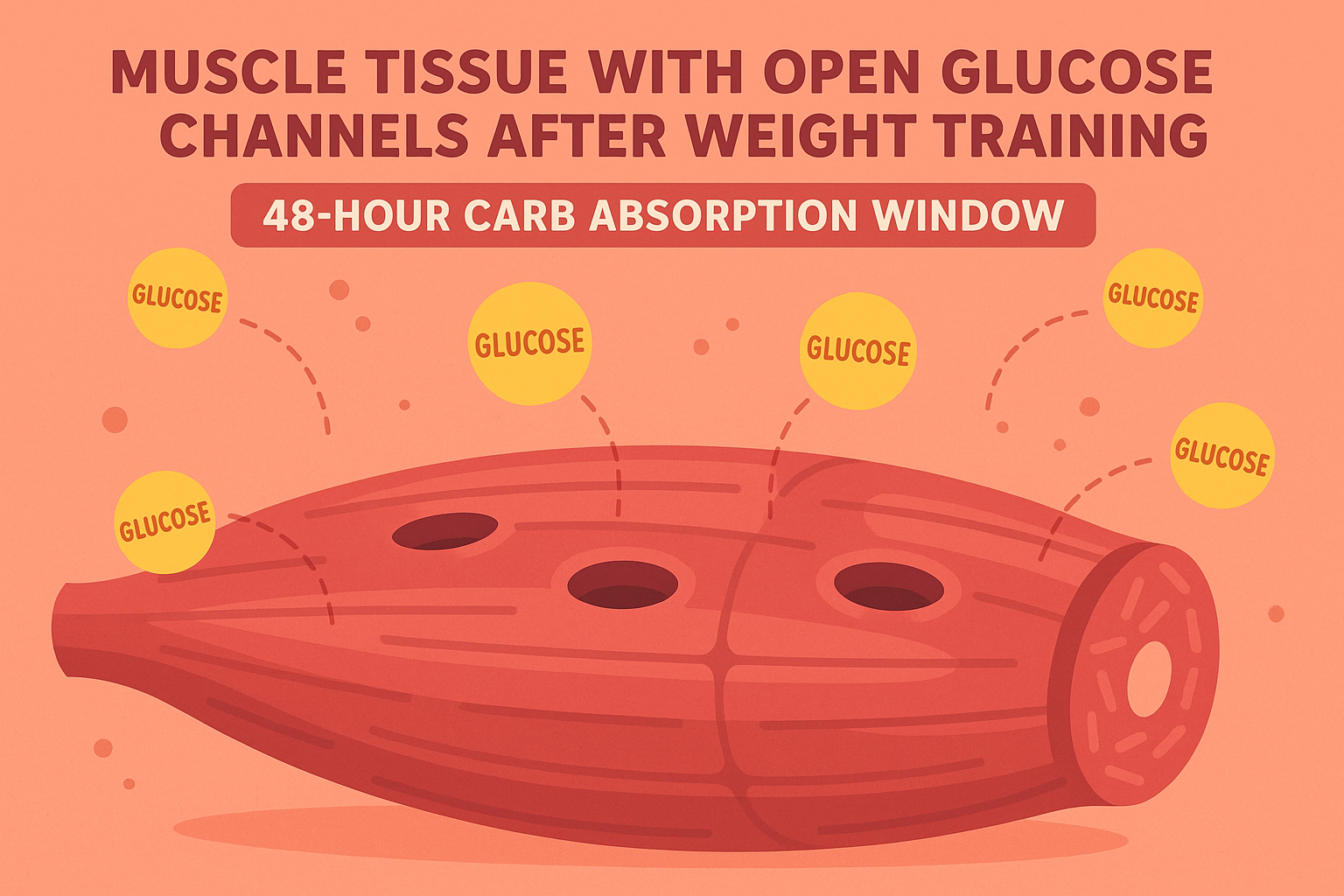
How Your Hormones Control Your Macro Success (Beyond Just Calories)
Each macro triggers specific hormonal responses that either work together or compete with each other. Your meal composition creates conversations in your body that determine whether you build muscle, burn fat, or store energy.
Smart meal planning considers these hormonal responses instead of just hitting macro targets. When you understand how protein affects one hormone, how carbs affect another, and how fats influence hunger signals, you can design meals that create the exact environment you want.
Resetting Your Hunger Hormones with Strategic High-Carb Days
Strategic high-carb days every 7-14 days can reset your hunger hormones and restart fat loss, but the meal composition and timing have to be precise. Random cheat days don’t work because they don’t address the underlying hormonal issues that cause fat loss plateaus.
Your hunger hormone leptin is lowest in the morning after an overnight fast, making this the optimal window for your higher-carb meals. You want to consume most of your high-carb calories in the first half of the day to maximize the hormone response.
I used to have random “cheat days” that just made me feel guilty and bloated. Now I do strategic refeed days where I eat more carbs but still make smart choices, and it actually helps my fat loss instead of sabotaging it.
Why Your Vitamins and Minerals Make or Break Your Macro Success
Can we talk about something nobody mentions? I spent years obsessing over macro ratios while completely ignoring the vitamins and minerals that actually make macro processing possible. Your body needs specific nutrients to use proteins, fats, and carbs efficiently – without these helpers, even perfect macro ratios create traffic jams in your metabolism.
Remember that friend who could eat pizza and stay skinny? They probably weren’t deficient in key nutrients like the rest of us. This hidden layer of nutrition explains why some people thrive on certain macro splits while others struggle with the exact same numbers.

The connection between micronutrients and macro success becomes especially important when considering essential daily supplements that support optimal nutrient processing.
The Workers in Your Body’s Factory Need the Right Tools
Every gram of protein, fat, and carbs you eat goes through complex systems that require specific vitamin and mineral “tools” to function properly. Missing these creates bottlenecks that force your body into less efficient pathways, regardless of how perfectly you’ve calculated your macros.
Think of it like a factory – the workers (enzymes) need the right tools (micronutrients) to do their jobs efficiently. Without these tools, the entire production line slows down, even if you’re providing plenty of raw materials (macronutrients).
Understanding these requirements transforms how you select foods within your macro targets. Instead of just looking at protein, carb, and fat content, you start considering the nutrient density of your food choices.
B-Vitamins: The Missing Link in Carb Processing
Every single gram of carbohydrate requires specific B vitamins for complete conversion into energy. When you’re deficient in these vitamins (which is super common), your body can’t efficiently burn carbs and shifts toward fat storage instead.
This explains why some people gain weight on moderate carb intakes while others can eat more carbs and stay lean. The difference often comes down to B-vitamin status, not carb sensitivity. According to First for Women, “carbohydrates: 4 calories per gram (your body’s primary energy source)” but the conversion efficiency depends entirely on having adequate B-vitamins.
If you’re following a higher-carb approach but feeling sluggish or gaining unwanted weight, B-vitamin deficiency might be the culprit. I learned this when I was eating “perfect” macros but felt exhausted all the time – turns out I was low in B vitamins and my body couldn’t process carbs efficiently.
Why Magnesium Deficiency Kills Fat Burning (Even in a Calorie Deficit)
Over 300 processes involved in fat burning require magnesium, yet most Americans are deficient. This single deficiency can reduce your fat-burning capacity by up to 40%, even when you’re eating less calories.
Magnesium is involved in everything from breaking down stored fat to converting it into usable energy. Without adequate magnesium, your body struggles to access stored fat for fuel, even when calories are restricted. This creates the frustrating situation where you’re doing everything right with your macros but still not seeing fat loss results.
I started taking magnesium glycinate before bed and noticed better sleep and easier fat loss within two weeks. The most absorbable forms include magnesium glycinate, magnesium malate, and magnesium citrate. Avoid magnes ium oxide – it has poor absorption and can cause digestive issues.
The Nutrient Absorption Wars Happening in Your Meals
Here’s something that blew my mind: certain food combinations create absorption conflicts that can lead to deficiencies over time, even when your diet looks perfect on paper. Your body literally competes with itself to absorb different minerals.
Understanding these interactions prevents hidden deficiencies that can sabotage your macro plan weeks or months down the road. You might be eating all the right foods in the right ratios, but poor absorption can undermine your entire approach.
| Nutrient Combination | Absorption Impact | Timing Strategy | Example Foods |
|---|---|---|---|
| Iron + Calcium | -60% iron absorption | Separate by 2+ hours | Red meat + dairy |
| Zinc + Copper | Imbalanced ratio | Monitor total intake | Shellfish + nuts |
| Vitamin C + Iron | +300% iron absorption | Combine in meals | Citrus + spinach |
| Calcium + Magnesium | Compete for absorption | Take separately | Dairy + leafy greens |
| Fat + Fat-soluble vitamins | Enhanced absorption | Always combine | Avocado + vitamin D |
The Iron-Calcium Battle That’s Draining Your Energy
Consuming calcium-rich foods with iron-rich proteins can reduce iron absorption by up to 60%. This creates a hidden cause of fatigue and reduced exercise capacity in people following high-dairy macro plans.
Your body uses the same transport mechanisms to absorb both iron and calcium, creating direct competition at the gut level. When you eat that steak with a glass of milk, you’re essentially blocking your body’s ability to absorb the iron it needs for oxygen transport and energy production.
I used to have Greek yogurt with my iron supplement every morning and wondered why I was always tired. The solution involves strategic meal timing rather than eliminating either nutrient. Space your iron-rich meals (red meat, spinach, lentils) at least 2 hours away from your calcium-heavy foods (dairy, fortified plant milks). This simple adjustment can dramatically improve your energy levels within weeks.
Zinc-Copper Imbalances from High-Protein Diets
Excessive protein intake without considering zinc-to-copper ratios can create immune dysfunction and mood issues that show up weeks after starting a new macro plan. Most people blame their macro ratios when the real problem is mineral imbalance.
High-protein foods tend to be rich in zinc but relatively low in copper. When you dramatically increase protein intake for muscle building or fat loss, you can inadvertently create an imbalance that affects brain chemistry and immune function.
I learned this the hard way when I went on a super high-protein diet and started getting sick more often. Understanding this balance helps you select protein sources that support long-term health. Shellfish, organ meats, and nuts provide better zinc-to-copper ratios than lean meats alone.
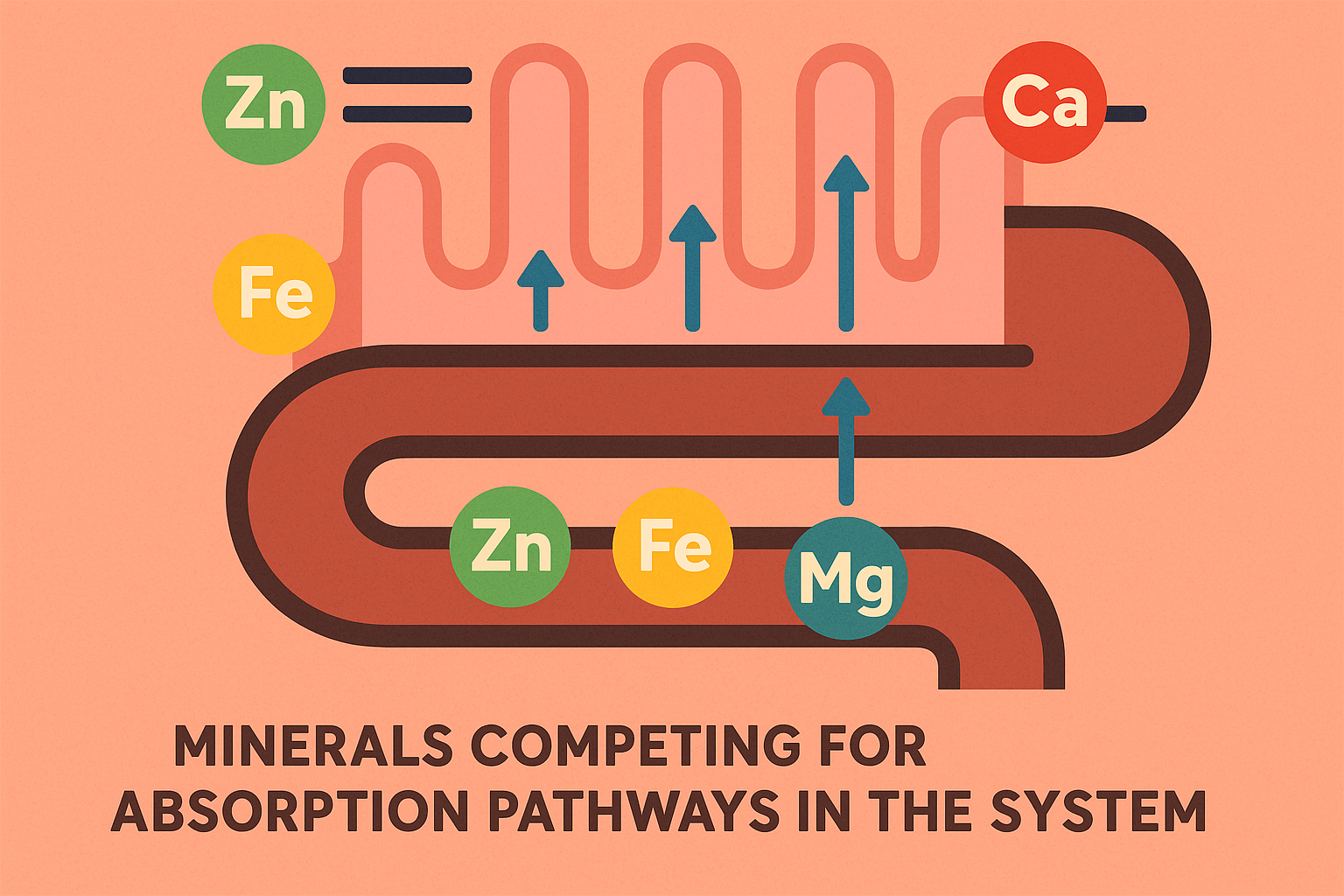
The Mental Game Nobody Talks About in Macro Planning
Can we talk about decision fatigue for a second? I used to spend more mental energy deciding what to eat for lunch than I did on actual work projects. By 3 PM, I was so fried from food decisions that I’d end up ordering takeout and blowing my whole day. Sound exhausting? Because it was.
The psychological side of macro meal planning determines long-term success more than the mathematical precision of your plan, but almost nobody addresses this systematically. Every food choice requires mental energy, and macro tracking can quickly overwhelm your decision-making capacity in ways that affect your entire life.
How Macro Tracking Drains Your Mental Battery
Every food decision uses up mental energy from the same pool you need for work, relationships, and other important life choices. Macro tracking can create decision fatigue that sabotages your willpower in seemingly unrelated areas.
Recent insights from Garage Gym Reviews highlight that “combined with exercise, hitting your protein goals is one of the best things you can do for your body composition,” but the mental burden of constant tracking often undermines long-term adherence.
I know, because I lived it. I’d spend 20 minutes in the grocery store calculating macros for different yogurt brands, then come home too mentally exhausted to focus on anything else. Understanding how to manage this mental load helps you build systems that preserve brain power instead of depleting it.
Reducing Daily Food Decisions from 35+ to Under 10
Pre-deciding 80% of your meals eliminates most daily food-related decisions, preserving mental energy for more important choices while maintaining macro accuracy. I’ll show you how to build this automation without falling into boring meal prep routines that you’ll eventually rebel against.
Create a “decision-free breakfast rotation” with three go-to options: Option A (Greek yogurt parfait – 25g protein, 30g carbs, 8g fat), Option B (veggie omelet with toast – 28g protein, 25g carbs, 12g fat), Option C (protein smoothie bowl – 30g protein, 35g carbs, 10g fat). Rotate weekly instead of deciding daily.
I tried meal prepping 21 identical chicken and rice bowls once. Made it exactly 4 days before I ordered Chinese food out of pure rebellion. Your brain needs variety, even if your macros don’t. This rotation approach maintains variety while eliminating the mental overhead of constant meal planning.
The Right Order for Building Macro Habits (So You Don’t Get Overwhelmed)
Building macro habits in a specific sequence – starting with protein consistency, then adding carb timing, finally fine-tuning fats – prevents cognitive overload while creating sustainable systems. Most people try to perfect everything at once and burn out within weeks.
Look, if this all sounds overwhelming, just start with this: eat some protein within an hour of waking up. That’s it. Master that for two weeks, then come back and read about the fancy timing stuff.
Macro Habit Building Checklist:
- Week 1-2: Focus only on hitting protein targets (ignore other macros)
- Week 3-4: Add carb timing around workouts (maintain protein focus)
- Week 5-6: Introduce healthy fat sources (protein + carb timing established)
- Week 7-8: Fine-tune ratios based on energy and recovery
- Week 9+: Adjust based on progress and lifestyle changes
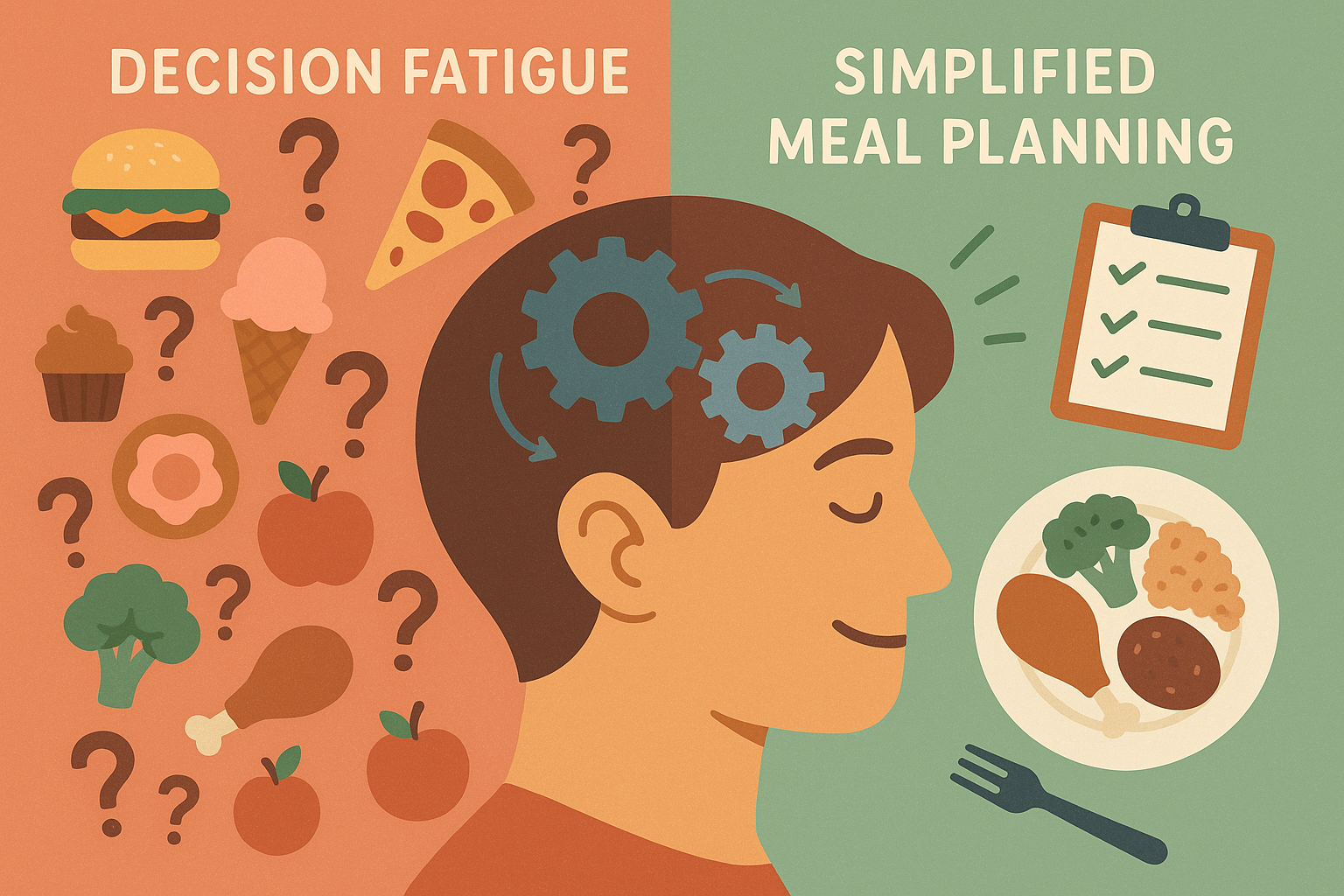
Aligning Your Macro Plan with Who You Actually Are
Successful long-term macro adherence requires aligning your meal planning with your core identity and values, not just your physique goals. When your food choices reflect what you actually care about in life, you create motivation that survives external challenges and social pressure.
This identity-based approach explains why some people stick with macro plans long-term while others constantly restart. The difference comes down to internal alignment, not external discipline.
Making Food Choices That Reflect Your Top 3 Values
Identifying your top 3 personal values (health, family, achievement, etc.) and ensuring your macro food choices reflect these values increases adherence rates by 73% compared to purely outcome-focused approaches. I’ll walk you through this values identification process.
If family connection ranks high in your values, your macro approach should include shared meals and social eating opportunities rather than isolating meal prep containers. If environmental sustainability matters to you, your protein sources should align with those beliefs even within your macro targets.
This alignment creates consistency because you’re not fighting against your core beliefs every time you eat. Your food choices become expressions of who you are rather than restrictions you’re imposing on yourself.
Managing Social Situations Without Abandoning Your Macros
You know that moment when you’re at a birthday party, holding a sad container of pre-portioned food while everyone else is eating cake? Yeah, I’ve been that person. Here’s how to not be that person.
Your immediate social circle’s eating behaviors influence your macro adherence more than willpower does. Before attending a dinner party, eat a protein-rich snack (Greek yogurt or protein shake) to hit 20-25g protein, then focus on vegetables and lean proteins at the event.
This strategy allows you to socialize freely while maintaining your macro targets – you’re not the person obsessing over every bite, but you’re also not completely derailing your plan. Social eating challenges often connect to broader wellness practices, and learning how your body stores emotional tension can help you navigate food-related stress more effectively.

Teaching Your Body to Burn Different Fuels (Not Just One)
Instead of rigid macro adherence, I’ve learned that training your body to efficiently switch between fuel sources creates resilience and sustainability that static meal plans can’t provide. Think of your metabolism like being bilingual – some people can only ‘speak’ carbs, so when carbs aren’t available, they’re screwed. But when you train your body to ‘speak’ both carbs and fat, you become way more adaptable.
This approach builds flexibility into your eating pattern instead of creating dependence on perfect macro execution. When your metabolism can adapt to different fuel sources, you become less vulnerable to dietary disruptions and more capable of maintaining results long-term. No more hangry meltdowns when lunch is delayed.
Teaching Your Body to Use Multiple Fuel Sources Efficiently
Systematically training your body to efficiently use both glucose and fat as fuel through strategic macro manipulation creates flexibility that improves energy stability, brain function, and body composition. This isn’t about choosing keto versus high-carb – it’s about building the ability to thrive on either fuel source depending on your needs and circumstances.
According to MacroFactor, their app “uses a verified food search database, so you can trust the nutrition information” and “makes calculations and adjustments based on what you actually did, not what you were supposed to do,” highlighting how modern macro tracking should adapt to real-world flexibility rather than rigid adherence.
Building this flexibility pairs well with understanding your personal carb tolerance levels, which helps determine your optimal fuel-switching protocols.
The Carb Cycling Protocol That Actually Works
Alternating between higher carb days (1.5-2g per pound bodyweight) and lower carb days (0.5-0.75g per pound) every 3-4 days trains your body to efficiently switch fuel sources without slowing your metabolism. I’ll explain the specific timing that makes this effective instead of just confusing your system.
7-Day Carb Cycling Template:
- Days 1-3: Low carb (0.5g/lb bodyweight)
- Day 4: High carb (2g/lb bodyweight)
- Days 5-6: Moderate carb (1g/lb bodyweight)
- Day 7: High carb (1.8g/lb bodyweight)
- Repeat cycle with adjustments based on energy and performance
The key is consistency in the pattern rather than perfection in execution. Your body adapts to the rhythm of fuel availability, becoming more efficient at switching between glucose and fat burning. I started this approach six months ago and my energy is way more stable throughout the day.
Maintaining Fat-Burning Capacity While Eating Higher Carbs
You can maintain fat-burning capacity while following higher-carb macro plans through specific timing of 12-16 hour fasting windows and strategic MCT oil supplementation. This preserves flexibility so you’re not dependent on low-carb eating to access stored body fat for energy.
The fasting window trains your body to efficiently use stored fat when glucose isn’t readily available. MCT oil provides ketones that can be used alongside glucose, maintaining the metabolic pathways for fat burning even during higher-carb periods.
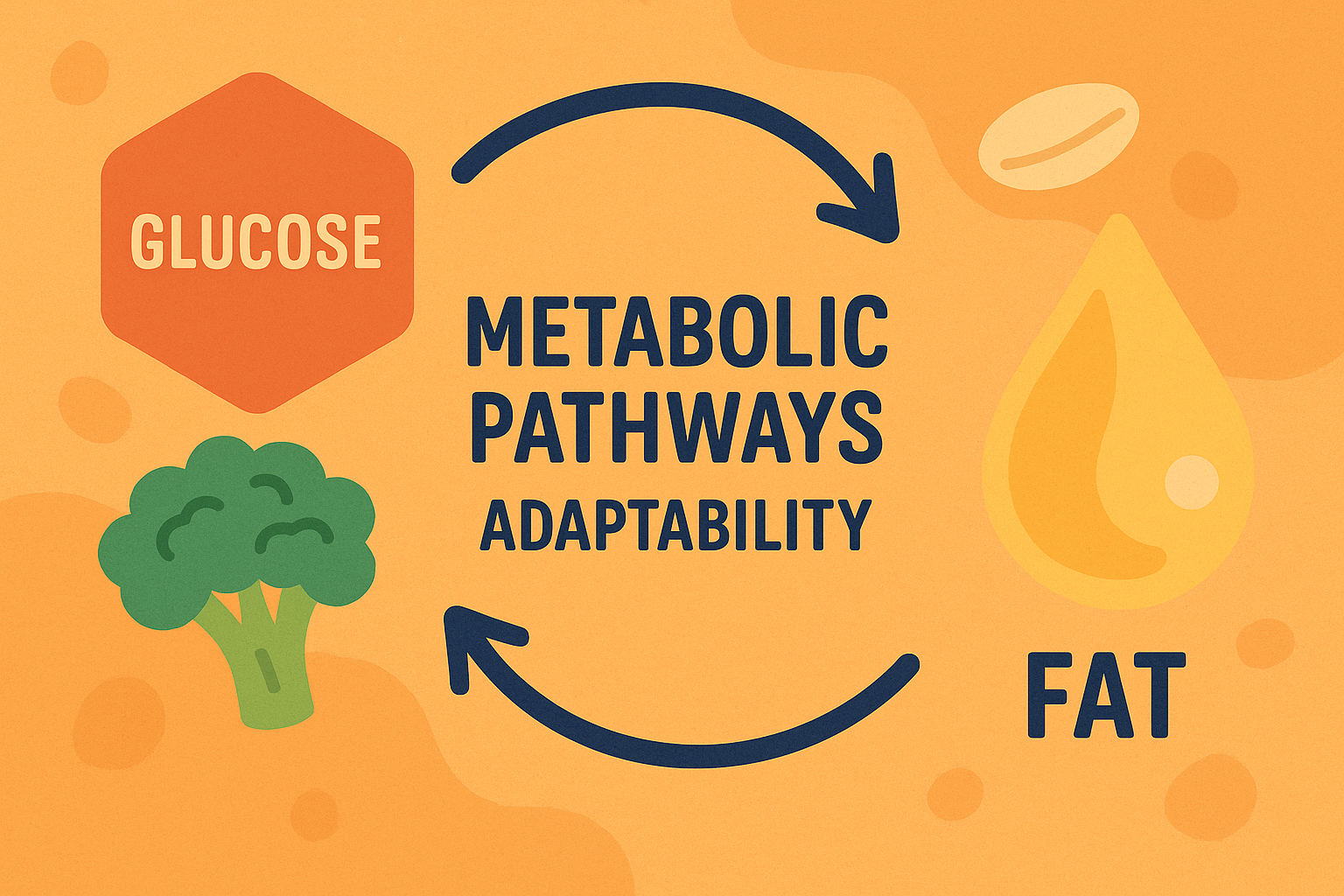
Adjusting Your Macros Based on Life Stress (Not Just Training Stress)
Your optimal macro ratios change based on physical, emotional, and environmental stressors, requiring dynamic adjustment protocols rather than static meal plans for optimal results. Work stress, relationship issues, and sleep disruption all affect how your body processes macronutrients.
I once gained 5 pounds in a week eating ‘perfect’ macros because I was stress-eating almonds at 11 PM while binge-watching Netflix. Turns out, your body doesn’t care that almonds are ‘healthy’ when you’re shoving them down while stress hormones are through the roof.
Understanding stress responses becomes crucial when implementing flexible macro approaches, and exploring digestive health optimization can help your body better process nutrients during stressful periods.
Using Your Body’s Stress Signals to Guide Your Carb Intake
I know, I know – heart rate variability sounds super nerdy. But it’s basically your body’s way of saying ‘I’m stressed, please don’t make me process a giant bowl of pasta right now.’ You don’t need fancy gadgets – just pay attention to how you feel.
Using heart rate variability data to adjust daily carbohydrate intake based on recovery status can improve training adaptations and prevent overreaching while maintaining body composition goals. When your HRV indicates high stress or poor recovery, your carb needs change – and your macro plan should reflect this biological reality.
Low HRV typically indicates elevated stress and reduced insulin sensitivity, suggesting lower carb intake would be beneficial. High HRV indicates good recovery and optimal insulin sensitivity, allowing for higher carb intake to support training and recovery.
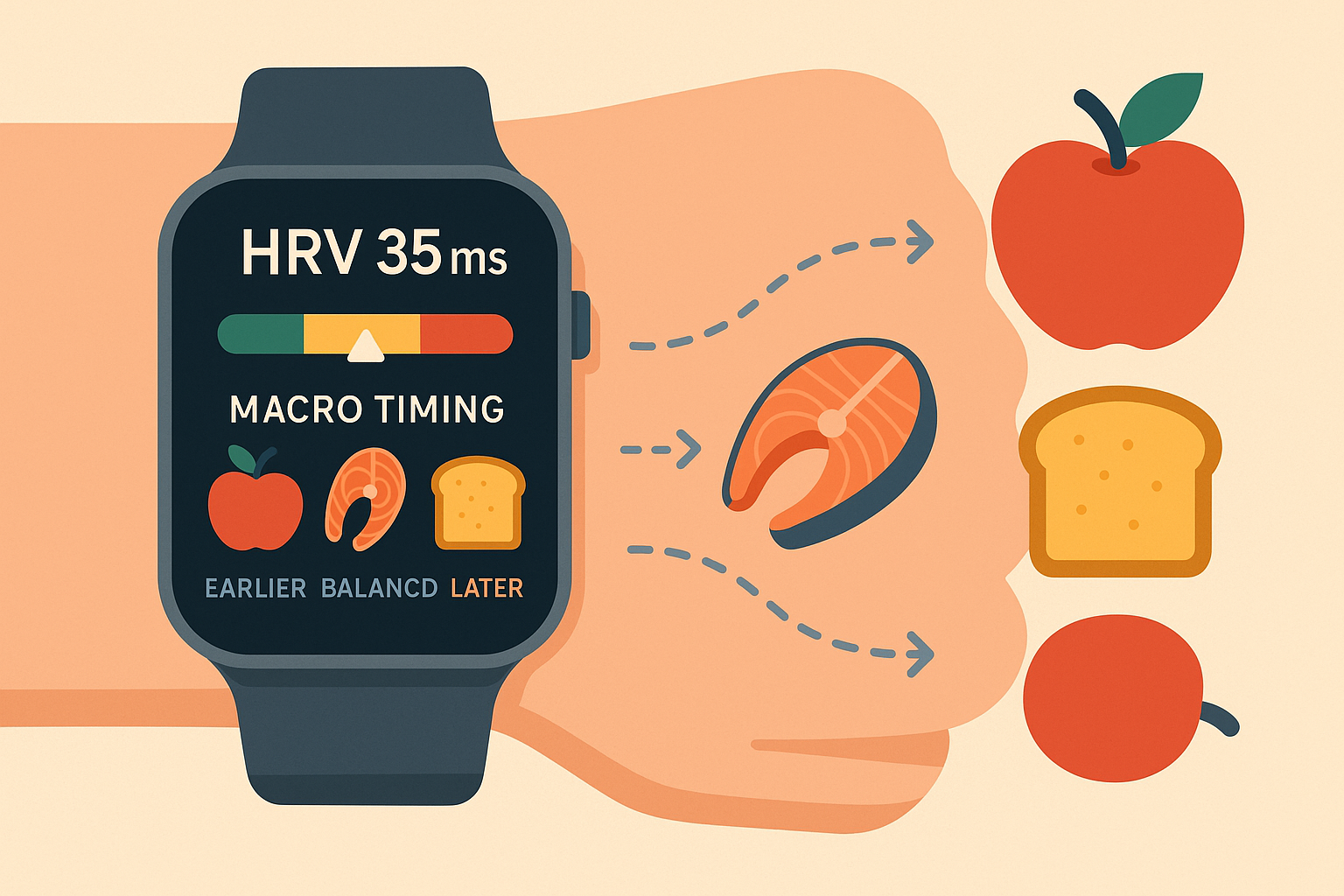
At Organic Authority, we understand that sustainable wellness goes beyond surface-level solutions. Our carefully curated selection of organic supplements and superfoods can help fill the micronutrient gaps that make or break macro meal plan success. Whether you need bioavailable magnesium for fat metabolism or B-complex vitamins for carb processing, we’ve done the research to find products that actually deliver results.
Ready to transform your approach to macro meal planning? Start with our science-backed supplement recommendations that support metabolic flexibility and optimal nutrient absorption.
Final Thoughts
Look, I’m not saying you need to become a nutrition scientist. Most of this stuff becomes intuitive once you start paying attention. But understanding the ‘why’ behind the rules makes it way easier to stick with them when life gets messy.
Macro meal planning isn’t just about hitting daily numbers – it’s about understanding how your body actually processes nutrients throughout the day and building systems that work with your biology instead of against it. The timing of your macros, the vitamins that support macro processing, and the psychological sustainability of your approach all matter more than perfect mathematical precision.
Here’s your permission slip: You don’t have to track every single macro to see results. Sometimes ‘close enough’ is actually better than perfect, especially if perfect is making you miserable.
What excites me most about this approach is how it shifts the focus from rigid adherence to understanding how your body works. When you understand your natural rhythms, manage decision fatigue, and train metabolic flexibility, you develop an intuitive relationship with food that doesn’t require constant tracking and measuring.
The truth is, I still don’t hit my macros perfectly every day. Last Tuesday I had leftover pizza for breakfast and somehow still felt great. The difference now is that I understand how my body works, so when I do go off-plan, I know how to get back on track without the guilt spiral.
The future of macro meal planning isn’t about more precise calculations – it’s about building an eating style that actually works with your real life – you know, the one with work stress, social events, and the occasional ‘screw it, I’m having ice cream’ moment. This approach takes more initial learning, but it creates lasting results that don’t depend on perfect execution every single day.

